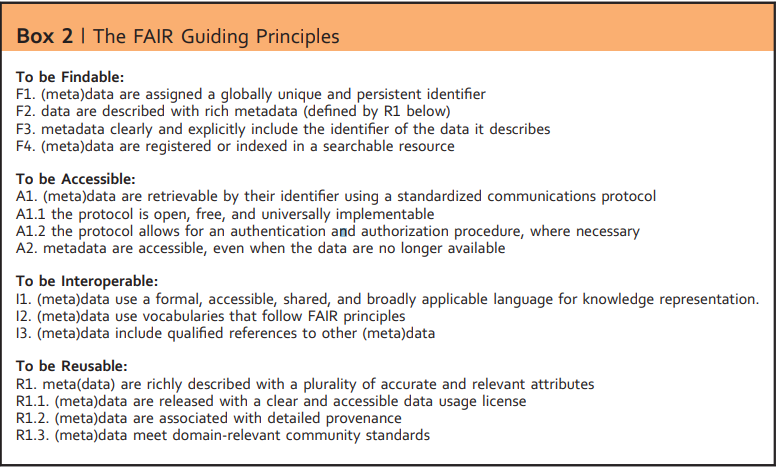”Data! Data! Data! I cannot make bricks without clay”-Sherlock Holmes.
Everyone knows that data is important to a start-up, but it’s more complicated than that. Data is the foundation on which you build all of your business decisions.
Many early-stage start-ups are often faced with the problem of how to get their data in order to make those bricks. As a result, they are often forced to make decisions based on assumptions or prejudices rather than accurate data.
If you know that it’s a good idea to have comprehensive data for growth, you must determine what kind of data you need to reach your goals effectively.
At any given moment, your data needs are going to be changing.
By thinking more strategically about what kind of data you need to grow into the business model that you envision, then start-ups can more effectively organize their databases so they are more useful for both present and future needs.
First Thoughts
The key here is simple yet powerful: have the right data in the right form at the right time.
According to ‘FAIR Guiding Principles for scientific data management and stewardship that was published in Scientific Data, authors recommend a set of principles to ensure e-research data is findable, accessible, interoperable, and reusable.

Resource:Scientific data. The FAIR Guiding Principles for scientific data management and stewardship.
In brief, data has to be:
- Findable: available via a unique identifier and associated with clear metadata that describes what it is, where it came from, and how it was collected.
- Accessible: easily retrieved by authorized users, in a form that is suitable for the task at hand.
- Interoperable: be able to be combined with other data sets so that meaningful analyses can be conducted across multiple datasets.
- Reusable: to be reusable, which means that it is digital and in nonproprietary formats and under an open license (e.g., public domain).
Therefore, start-ups should never lose sight of their business objectives when thinking about if or how they need to use data. This means that it may be necessary to collect more data than you think at first glance. In fact, this will mean taking advantage of all available opportunities in order to keep your momentum going.
In addition, by knowing the answer to questions such as “What does our target market want from us?”, “Who are our customers?”, “How many customers do we have?” Start-ups can then use this information to discover new methods of data acquisition.
Second Thoughts – The Data Dilemma
This is where a lot of start-ups stumble. They recognize the importance of data and they want it to be perfect, so they spend too much time on collection rather than analysis. This can often lead to paralysis by analysis.
Or, they collect data but never use it because it’s in the wrong format or because they don’t have the manpower to analyze it properly. So again, it just sits there unused and gathering digital dust.
In order to make the best use of your data, you need to be ruthless about what you keep and what you discard. Ask yourself these questions:
- Is this data relevant to my business?
- Is it structured properly?
- Is it current?
- Do I have the right tools to analyze it effectively?
If you can answer “yes” to all of them, then keep your data. If not, find out how you can change that.
How can early-stage start-ups make use of data effectively?
Although it is true that start-ups do not have the resources to get a perfect hold of their data, they can at least get started on getting some basic information into a database.
It will be difficult in the beginning but once they have an understood plan for how to use all their metrics then there should be no problems later on.

There are countless methods for using data more effectively, and here we will discuss some of the most common ones:
-
Starting with a solid foundation
There is no better place to start than your product roadmap when it comes to using data effectively.
By setting up a proper system for collecting data, you can be assured that you will have the most accurate information. As long as this is done before any significant decisions are made based on what you think you know (or don’t know), then your business will thrive.
If there is no plan in place before any significant investments are made, then it could seriously hurt your company’s growth prospects down the line when things go wrong or not as expected because of crucial information that was just plain wrong.
Many start-ups tend to focus too much on getting the big picture right and they let little details slip by when it comes to building their databases. It is important that when creating content for companies’ metrics, every single detail must be looked into so that data can be accurately tracked. This might seem daunting at first, but it will save time and money in the long run.
-
Define a high-level product funnel
A high-level product funnel would consist of the stages that each product goes through to get to market. This could include the ideation, invention, prototyping, testing, and production phases.
The ideation phase is where your company or team will come up with new ideas that they haven’t thought of before to try and create something that solves a problem. During this process, you will be focused on how to make this idea into a product by looking for example products in the marketplace.
The invention phase is where you will focus on turning your idea into a prototype using the knowledge you’ve gained through research and analysis. The prototyping phase focuses on making sure the prototype is working well.
Finally, in the testing phase, you test the product and the overall customer experience to see if it’s worth selling in the marketplace.
During each of these stages, you will be collecting different types of data that you can later analyze to make better decisions for your business. Each stage can apply unique metrics that help take important next steps for growing your company, such as knowing what works well with customers and where improvements need to be made.
The main idea is to define a metrics strategy for each stage and put it into action.
When data isn’t being monitored correctly, tech companies often let customer experience get away from them and put them in a bad spot where their company will struggle to survive. By putting the data into action, start-ups can note which stages worked well and what could be done better for future iterations.
-
Get everyone on board
By letting everyone on your team know the purpose of the data you are collecting, they will be able to use it effectively. For example, if someone who is working with customers on features sees that people want something different than what the development team was originally planning on building, then they can let them know about this information right away.
As more and more start-ups grow into larger companies, they need to ensure that all employees understand how product metrics work so that their company can continue to create successful products in the future.
This is especially important for scaling a business because when there are a lot of changes going on in a company, it’s easy to forget why certain metrics matter and make decisions based on assumptions instead of actual evidence.

-
Use data to learn from your most successful customers
Customer success is a huge part of building a startup that focuses on delivering value to customers. If you’re not offering the best product experience possible, then it will be difficult for your business to grow and prosper in the marketplace.
To accurately determine which metrics are important, start-ups should focus on their most successful customers and see what metrics they may be measuring that could reflect this success.
By paying attention to their metrics and how satisfied they were with their purchase, start-ups can use new information about what makes customers happy and continue developing around these ideas while working out any kinks before releasing products into more crowded marketplaces where customers acquisition becomes more challenging.
-
Keep up with trends and analyze your data accordingly
1. Look for trends that are growing structurally:
There are different data trends that you can look for when analyzing your business metrics. One of the most important things to do is to see which metrics will be evolving structurally in the future and pay close attention to these metrics over time. This will often allow you to identify areas that may need more attention in order to meet customer needs in a way that works for them and their lifestyle.
2. Look for trends that are growing exponentially:
By looking for data trends that are growing exponentially, many start-ups will find themselves experts in their niche and can use this information to continue expanding their product offerings while staying ahead of the competition.
If your products are appealing to a very specific type of customer, look into how you can improve on things they like about your products by discovering what other types of customers would be interested in the same features and adding them to your product roadmap.
This will allow customers who may have been overlooked in the past to become involved with your company and build a strong customer base that may have grown over time if smaller updates had been made initially.
⇒ By combining information from both progressive growth metrics and exponential growth metrics, tech companies that take advantage of this knowledge will be a competitive business and continue to grow with customer needs in the future.
-
Identify predictors
Correlations or regressions can be used to look for data trends that are not growing fundamentally but still important to monitor. This is especially important in an early-stage company when there may be significant changes happening in the marketplace and you need to keep up with these developments so your business will stay relevant over time.
To identify correlations, start by looking at all of the different metrics that you collect and comparing them side-by-side with another metric that seems related to them or something else about your business. Look for relationships between different metrics. Whether it’s true or not, this could help you identify ways that your product can improve in the future based on what customers are already responding positively towards.

-
Analyze any incoming feedback
Collecting feedback from your customers can be very helpful when trying to make use of data in your startup. This will allow you to see the types of problems that customers are having with your product and identify areas for improvement in order to reduce the customer churn rate.
To ensure that you’re getting useful feedback, start by creating surveys that ask open-ended questions so users can answer without any trouble. Ask specific questions about what features they would like to improve upon or if there’s anything they don’t like about your service overall.
The more data you have about user behavior, the better marketers will be at creating campaigns to build upon current users’ success in order to encourage the acquisition of new customers.
In addition, this can help ease customer churn by finding out when certain factors make it difficult for users to continue engaging with your product and taking steps towards improving the experience overall.
Once you understand who is coming into your business and why it’s easier to identify which segments of users are the most valuable and who deserves more attention from your marketing team.
-
Focus on what should be prioritized
With data from both product analytics and user testing, it’s easy to see what areas of your company need more attention. Once you’ve identified the metrics that are growing exponentially, it’s easy to find out which changes will have a significant impact on your business.
With tech startups, this is often limited once the product has launched, but there are still many ways to identify where improvements can be made. While collecting feedback from your customers about what they need in order to become more engaged with your product is extremely valuable, it may not always be clear what needs to be done next.
To overcome these obstacles, look for areas of exponential growth and determine which features users were most excited about or connected better with other aspects of your service or technology as a whole. Once you understand how interconnected all of the different parts of your system are, it’s easier to see how improving one aspect can help grow other areas in your company.
How to guarantee a successful future for your business?
If you want to ensure that data is being effectively collected and used, then it’s important to start from the beginning.
By doing this, you can establish a solid foundation that all of your team members will be able to build on throughout their time at your company. Data should never solely come from one source because there are many processes involved in building a good product experience and oftentimes these each has separate metrics associated with them which need to communicate well with each other.
When data isn’t clearly defined, companies often make mistakes when using it which leads them down a path where they will struggle to grow their business in an effective way.
The best way for a company to set itself up for success is to let each team member know the goals of their metrics and encourage them to share these goals with everyone they interact with. By doing this, tech companies can create effective processes that will end in positive growth for their business and iterate on it until they have perfected it.
As you can see, data is important for every aspect of creating an effective product experience for your customers. This is especially true during the early stages of building your product because there are many changes that must be made along the way before you filter out what really works well with users.
Since there are so many ways to use data effectively, tech companies need to make sure that all employees understand how these strategies map back to their specific process. But by getting everyone on board, early-stage start-ups will be able to establish a good foundation that they can use to create the best product experience in their industry.
Your 3 key steps to succeed: Collect it, Measure it, Analyze it

By thinking strategically about how you are going to use your data, you can make the most out of it. If you’re not using data effectively then there might be some other underlying problem that needs to be fixed first.
Analyzing data is an art in itself and requires us to critically consider what information we need for our models as well as how much of that information do we have at present.
The main key here is realizing when it makes sense to collect or gather specific kinds of data, so you aren’t wasting both time and money gathering data points that don’t help with your long-term goals.
Being strategic about what kind of data you have now will allow you to pave the way towards better analysis, eventually leading to better decisions at the end of the day.
At MajestEye, we help our clients better understand how to use their data effectively. With our experienced services and knowledge, we can jumpstart your company’s journey towards using the most important resource at hand.
If you want to know more about how we can help your business, then feel free to reach out and talk with us further.






